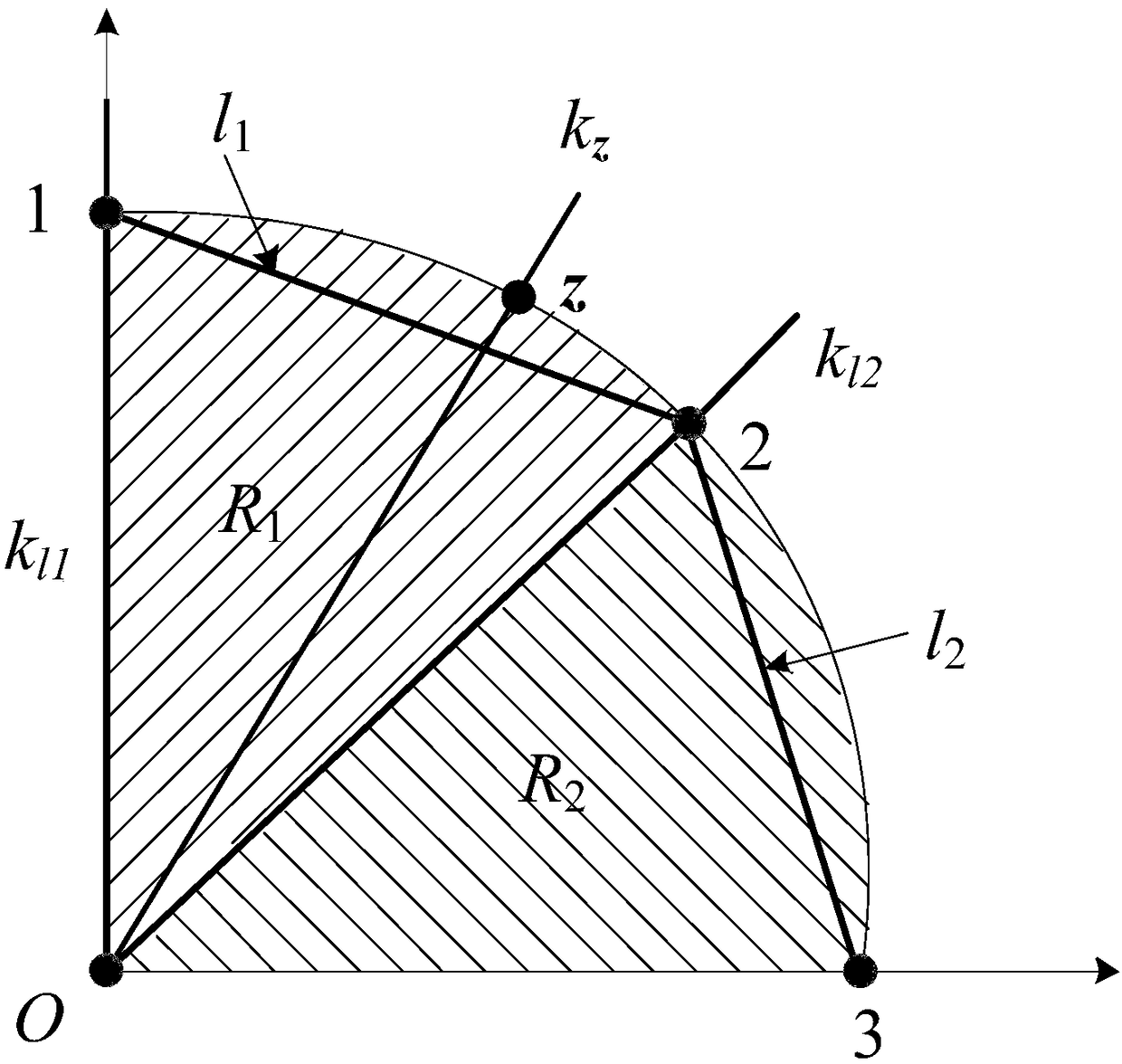Space tangent vector-based power system static-state voltage stability domain boundary approximation method
A technology for static voltage stability and power systems, applied in electrical components, circuit devices, AC network circuits, etc., can solve the problem of difficult formation of hyperplane analytic formula, difficult hyperplane analytic formula to describe the boundary of voltage stability domain, complex topological characteristics of the boundary, etc. question
- Summary
- Abstract
- Description
- Claims
- Application Information
AI Technical Summary
Problems solved by technology
Method used
Image
Examples
Embodiment 1
[0072] The embodiment of the present invention provides a method for approximating the boundary of the static voltage stability region of a power system based on a space tangent vector, such as figure 1 As shown, the method includes the following steps:
[0073] 101: Using the ground state power flow as the starting point, the continuous power flow method is used to search for a series of power system saddle junction bifurcation points and their tangent vectors to obtain the boundary point in the two-dimensional active power injection space of the static voltage stability domain, that is, the SNB point;
[0074] 102: Obtain a two-dimensional approximate boundary that meets the requirement of a certain distance error threshold;
[0075] Based on the space tangent vector, the static voltage stability domain formed by the obtained boundary points is preliminarily divided into several regions, such as figure 2 As shown, the static voltage stability domain can be determined by R 1 With R...
Embodiment 2
[0080] The following combined with the specific calculation formula, attached image 3 , Figure 4 , Figure 5 as well as Image 6 The solution in Example 1 is further introduced, as detailed in the following description:
[0081] 201: Taking the base state power flow as the starting point, repeatedly calling the continuous power flow to obtain a series of SNB points under different power growth directions and the tangent vector and load margin λ corresponding to the SNB points;
[0082] Among them, the SNB point when only node j has active power injection is denoted as z 0 , Along the direction in which the active power injection of the i-node increases gradually, denote the obtained SNB points as z 1 ,z 2 …z r (r is divided by z 0 The number of SNB points obtained outside). The obtained SNB point and its tangent vector are mapped to the two-dimensional active power injection space with the active power injection of nodes i and j as the coordinate axis.
[0083] 202: Using the metho...
Embodiment 3
[0149] The following combines specific examples, Figure 7 , Picture 8 , Picture 9 And Table 1 verifies the feasibility of the schemes in Examples 1 and 2, as detailed in the following description:
[0150] This example is to search for the approximate boundary of the two-dimensional SVSR of the WECC 3-machine 9-node system as an example to verify the effectiveness of the method. The WECC 3-machine 9-node test system is as follows Figure 7 Shown.
[0151] With load nodes 5 and 9 as the key nodes for voltage stability, the active power injection of nodes 5 and 9 is selected as the coordinate axis, and the SVSR is constructed using this method in the two-dimensional active power injection space.
[0152] Set different power growth directions, repeatedly call the continuous power flow method to search to obtain a series of SNB points and their tangent vectors, such as Picture 8 Points 1, 2...13 are shown. The coordinates of the SNB point and its tangent vector in the two-dimensional...
PUM
 Login to View More
Login to View More Abstract
Description
Claims
Application Information
 Login to View More
Login to View More - Generate Ideas
- Intellectual Property
- Life Sciences
- Materials
- Tech Scout
- Unparalleled Data Quality
- Higher Quality Content
- 60% Fewer Hallucinations
Browse by: Latest US Patents, China's latest patents, Technical Efficacy Thesaurus, Application Domain, Technology Topic, Popular Technical Reports.
© 2025 PatSnap. All rights reserved.Legal|Privacy policy|Modern Slavery Act Transparency Statement|Sitemap|About US| Contact US: help@patsnap.com



